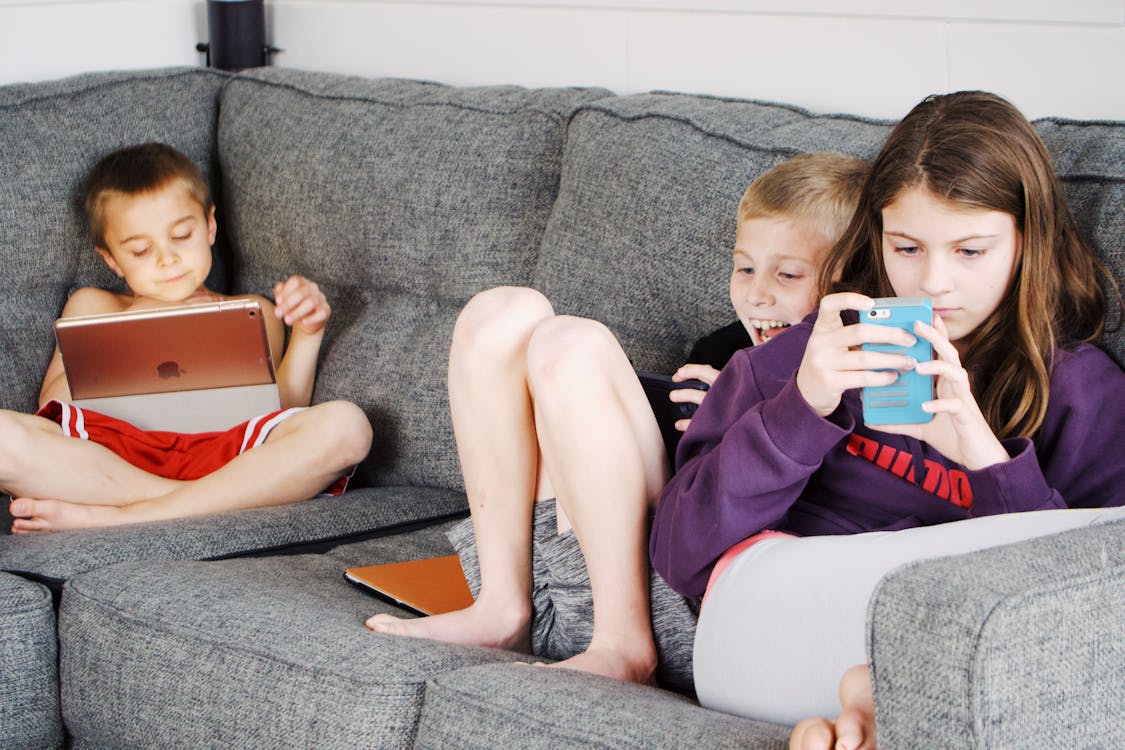Determining the safe amount of screen time for children,
including phone usage, is a multifaceted issue that involves understanding the
impact of screen time on various aspects of a child’s development. Several
health organizations and experts have weighed in on this topic, offering
guidelines and recommendations to help parents and caregivers make informed
decisions.
Recommended Screen
Time by Age
The American Academy of Pediatrics (AAP) provides specific
guidelines for screen time based on the age of the child:
1. Infants (0-18 months):
- Screen Time:
Ideally, no screen time except for video chatting.
- Rationale:
Infants need direct interactions with caregivers for their cognitive and social
development. Passive screen time does not provide the needed engagement.
2. Toddlers (18-24 months):
- Screen Time: If
parents choose to introduce digital media, it should be high-quality
programming, and parents should watch with their children to help them
understand what they are seeing.
- Rationale: Joint
engagement is crucial at this age, as toddlers need adults to help interpret
what they see on the screen and relate it to the real world.
3. Preschoolers (2-5 years):
- Screen Time:
Limit to 1 hour per day of high-quality programming.
- Rationale: At
this stage, children are more capable of learning from screens, but they still
benefit more from interactive and hands-on activities.
4. School-aged children (6 years and older):
- Screen Time:
Consistent limits on screen time, ensuring it does not interfere with sleep,
physical activity, and other healthy behaviors.
- Rationale: While
educational content can be beneficial, excessive screen time can lead to
problems such as obesity, sleep issues, and behavioral problems.
Factors Influencing Safe Screen Time
1. Content Quality:
- Educational vs.
Entertainment: High-quality educational content can be beneficial for children,
fostering learning and development. In contrast, passive entertainment content,
especially if violent or inappropriate, can have negative effects.
2. Physical Health:
- Sedentary
Lifestyle: Excessive screen time is linked to a sedentary lifestyle,
contributing to obesity and related health issues.
- Eye Strain:
Prolonged screen use can cause eye strain, headaches, and vision problems in
children.
3. Mental and Emotional Health:
- Sleep Disruption:
Screen use, particularly before bedtime, can disrupt sleep patterns due to the
blue light emitted by screens.
- Behavioral Issues:
Overuse of screens can lead to attention problems, hyperactivity, and other
behavioral issues.
4. Social Development:
- Interaction:
Excessive screen time can limit face-to-face interactions, essential for
developing social skills.
- Cyberbullying:
Increased screen time, particularly unsupervised, can expose children to cyberbullying
and other online risks.
Practical Strategies for Parents
1. Create a Family Media Plan:
- Establish clear
rules about screen time, ensuring a balance between educational content and
entertainment.
- Set specific
times for screen use and make sure it does not interfere with meals, homework,
and physical activities.
2. Model Healthy Screen Habits:
- Parents should
lead by example, demonstrating balanced screen use and prioritizing offline
activities.
3. Encourage Alternative Activities:
- Promote
activities such as reading, outdoor play, and hobbies that do not involve
screens.
4. Designate Screen-Free Zones and Times:
- Make certain
areas of the home, such as bedrooms and dining areas, screen-free.
- Implement
screen-free times, such as during meals and one hour before bedtime.
5. Monitor Content and Usage:
- Use parental
controls to block inappropriate content and monitor children’s online
activities.
- Co-view and
co-play digital content to ensure it is appropriate and to engage in
discussions about it.
Addressing the Challenges
1. Balancing Screen Time in a Digital World:
- In today’s
digital age, screens are integral to education and socialization. It’s
essential to balance the educational benefits of screen use with potential
negative impacts.
2. Adapting to Individual Needs:
- Each child is
different, and screen time limits should be adjusted based on individual needs,
behaviors, and developmental stages.
3. Staying Informed:
- Parents should
stay informed about the latest research and recommendations regarding screen
time to make educated decisions.
4. Encouraging Responsible Use:
- Teach children
about responsible screen use, including the importance of taking breaks and
being mindful of their posture and eye health.
Conclusion
There is no one-size-fits-all answer to how many hours of
phone use is safe for children. The key lies in moderation and balance.
Ensuring that screen time does not replace critical activities such as physical
play, face-to-face interactions, and adequate sleep is crucial. By following
recommended guidelines, monitoring content, and fostering a healthy balance of
activities, parents can help their children reap the benefits of technology
while minimizing its potential risks.

